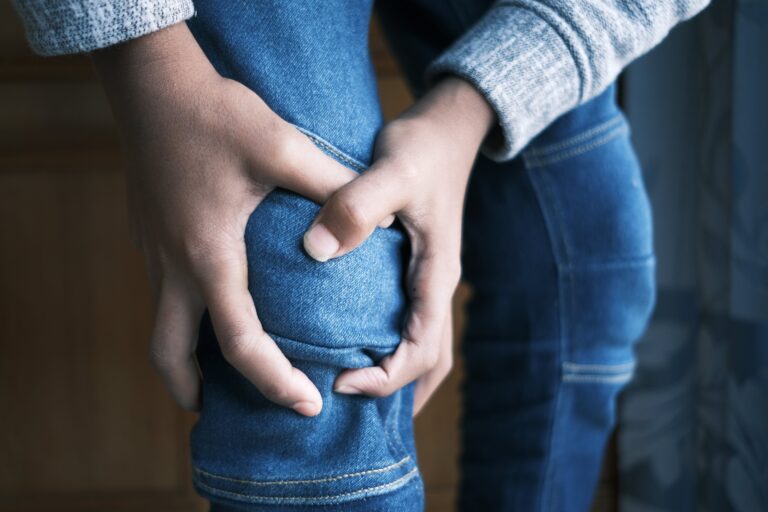Understanding and Managing Knee Pain for a Healthier You
Knee pain is a common issue affecting people of all ages, and understanding its causes and appropriate care is crucial for overall well-being. In this comprehensive guide, we’ll explore the various facets of knee pain, from its origins to effective management strategies.
1. Introduction
1.1 What is Knee Pain?
Knee pain refers to discomfort or inflammation in the knee joint, hindering regular movement and daily activities. It can arise from various factors, such as injuries, overuse, or underlying medical conditions.
1.2 Common Causes of Knee Pain
Understanding the root causes, including injuries, arthritis, and obesity, is vital to effectively addressing knee pain and preventing its recurrence.
2. Types of Knee Pain
2.1 Acute Knee Pain
Sudden injuries or trauma often lead to acute knee pain, demanding immediate attention and appropriate first aid.
2.2 Chronic Knee Pain
Persistent, long-term knee pain, commonly associated with conditions like osteoarthritis, requires a more comprehensive approach for management.
3. Symptoms and Diagnosis
3.1 Identifying Knee Pain
Recognizing the specific symptoms, such as swelling, stiffness, or clicking sounds, aids in accurate diagnosis and targeted treatment.
3.2 Consulting a Healthcare Professional
Timely consultation with a healthcare professional ensures an accurate diagnosis through physical examination, imaging, and other diagnostic tools.
4. Prevention and Lifestyle Changes
4.1 Maintaining Healthy Body Weight
Maintaining an optimal body weight reduces stress on the knee joints, minimizing the risk of pain and injuries.
4.2 Regular Exercise and Stretching
Incorporating regular, low-impact exercises and stretching routines promotes joint flexibility and strengthens the supporting muscles.
4.3 Proper Footwear
Choosing appropriate footwear plays a crucial role in supporting the feet and knees, preventing unnecessary strain and discomfort.
5. Home Remedies for Knee Pain
5.1 R.I.C.E Method
The Rest, Ice, Compression, and Elevation (R.I.C.E) method serves as a simple yet effective home remedy for alleviating acute knee pain.
5.2 Warm Compress and Ice Packs
Applying warm compresses or ice packs helps in reducing inflammation and soothing discomfort, depending on the nature of the pain.
5.3 Over-the-Counter Medications
Non-prescription pain relievers, such as ibuprofen or acetaminophen, can provide temporary relief from mild to moderate knee pain.
6. Medical Treatments
6.1 Physical Therapy
Structured physical therapy programs focus on strengthening the knee muscles, improving flexibility, and enhancing overall joint function.
6.2 Medications
Prescription medications, including anti-inflammatory drugs or corticosteroids, may be recommended to manage chronic knee pain and inflammation.
6.3 Surgical Interventions
In severe cases, surgical procedures, such as arthroscopy or knee replacement, may be considered to address underlying issues.
7. Alternative Therapies
7.1 Acupuncture
Acupuncture involves the insertion of thin needles into specific points on the body, promoting pain relief and improved energy flow.
7.2 Massage Therapy
Massage therapy helps in relaxing tight muscles, reducing tension, and enhancing blood circulation around the knee joint.
7.3 Herbal Remedies
Certain herbs, like turmeric and ginger, possess anti-inflammatory properties that may contribute to managing knee pain naturally.
8. Importance of Posture
8.1 Ergonomics and Knee Health
Maintaining proper posture, especially during prolonged sitting or standing, significantly influences overall knee health.
8.2 Desk Exercises for Knee Pain Relief
Incorporating simple desk exercises can prevent stiffness and discomfort, promoting better knee health during office hours.
9. Best Foods for Joint Health
9.1 Omega-3 Fatty Acids
Including omega-3 rich foods, like fatty fish and flaxseeds, in your diet can support joint health and reduce inflammation.
9.2 Vitamin D and Calcium
Ensuring an adequate intake of vitamin D and calcium contributes to strong bones, supporting overall joint function.
10. Exercises for Knee Pain
10.1 Low-Impact Exercises
Engaging in activities like swimming or cycling provides cardiovascular benefits without putting excessive strain on the knees.
10.2 Strengthening Exercises
Targeted exercises, such as leg lifts and squats, help in building muscle strength around the knee joint, enhancing stability.
11. Coping with Knee Pain Emotionally
11.1 Mental Health Impact
Chronic knee pain can have emotional ramifications, and seeking support
from friends, family, or professionals is essential.
11.2 Seeking Support
Joining support groups or seeking counseling aids in coping with the emotional aspects of dealing with persistent knee pain.
12. When to Seek Professional Help
12.1 Persistent Pain
If knee pain persists or worsens despite home remedies, seeking professional medical advice becomes imperative.
12.2 Red Flags
Specific symptoms, such as sudden swelling, severe pain, or inability to bear weight, may indicate a more severe issue, requiring immediate attention.
13. Lifestyle Adjustments
13.1 Adapting Activities
Making necessary adjustments to daily activities ensures that the knees are not subjected to unnecessary stress.
13.2 Assistive Devices
Using assistive devices, such as knee braces or walking aids, can provide additional support and alleviate strain on the joints.
14. Future Trends in Knee Pain Management
14.1 Technological Innovations
Advancements in technology, such as wearable devices and telemedicine, are shaping the future of knee pain management.
14.2 Research Developments
Ongoing research endeavors aim to uncover new insights into the causes of knee pain and innovative treatment modalities.

